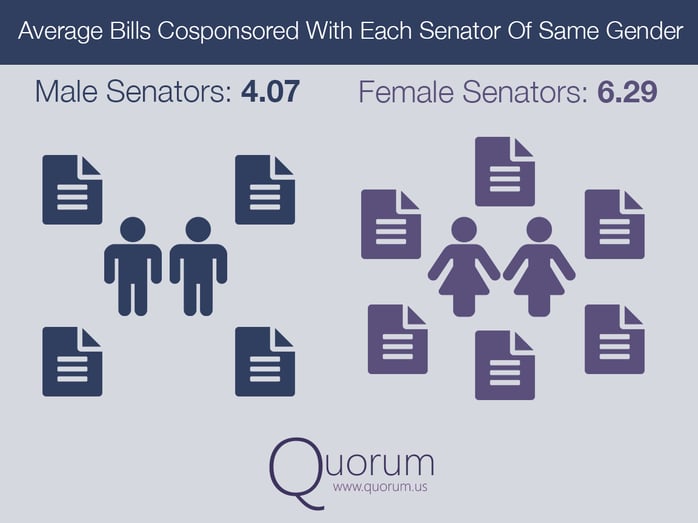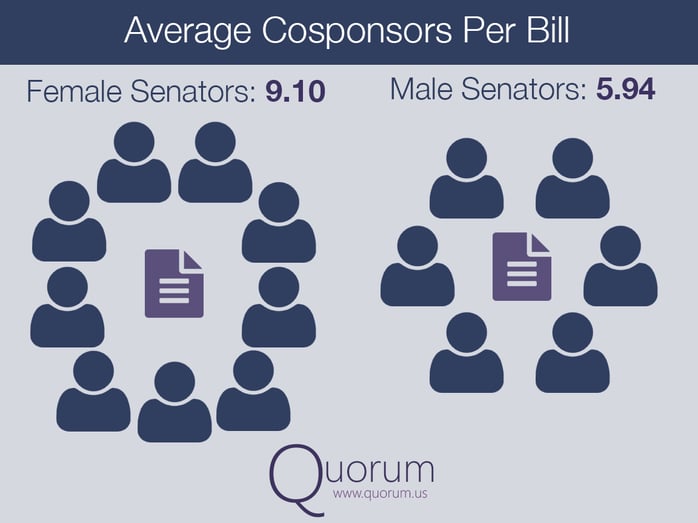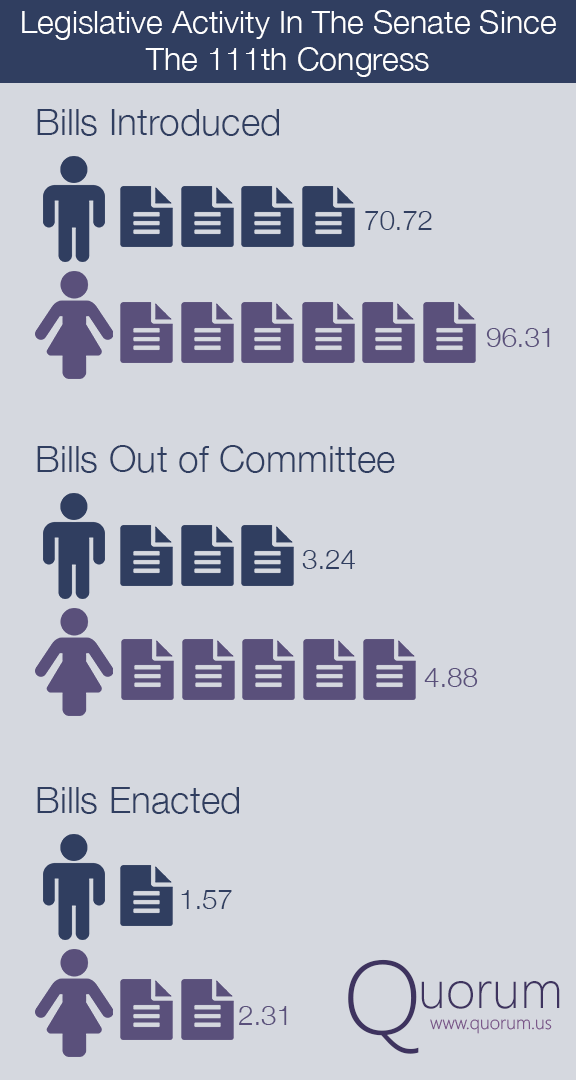In the 114th Congress, female lawmakers hold a record 104 seats—the first time in history that the number of women in Congress has surpassed 100. Looking back over the last seven years, insights from Quorum show this unprecedented female representation may lead to more legislative activity as female Members of Congress not only work more frequently with each other but also work more frequently across the aisle, passing more legislation in the Senate than their male colleagues.
Over the last seven years, the average female senator cosponsored 6.29 bills with another female senator, whereas the average male senator cosponsored 4.07 bills with his average male peer, a result that is significant at the .0001 level.

Further, female senators in recent years have demonstrated more bipartisanship with other women than their male counterparts. The average female senator has cosponsored 3.79 bills with each female senator of the opposite party since the 111th congress, while the average male senator only cosponsored 2.16 bills with each male senator of the opposite party (p < .004). In addition, the average female senator cosponsored 171.08 bills sponsored by all members of the opposite party while the average male senator sponsored 129.87 bills that had a sponsor from across the aisle.
Women in the Senate traditionally meet for periodic dinners, and all 20 women in the 113th Senate—16 Democrats and 4 Republicans—joined President Obama for dinner in the White House last year. Commentators have in part attributed this clear bipartisan effort in which women in the Senate can form personal relationships to the willingness of women to work on legislation with each other, and these data prove this to be the case.
Though the effect isn’t as strong in the House, female Members still cosponsor legislation with each other—both within their party and with the opposite party—more often than their male counterparts. Female representatives cosponsored an average of 2.85 bills with another female Member while the average male representative only cosponsored 1.67 bills with another one of his male colleagues, a result that is highly significant below the .0001 level.
Not only do women work more frequently with each other in Congress but female Senators are also more active legislatively and build more support for their bills. The average female Senator introduced 96.31 bills over the last seven years while their average male senator only introduced 70.72 bills. Bills introduced by females senators received an average of 9.10 cosponsors while the average bills introduced by a male senator received only 5.94 cosponsors.

This legislative effort has generated positive results for female senators, who moved an average of 4.88 bills out of committee and had on average 2.31 bills enacted in the past seven years compared to the 3.24 bills their male counterparts got out of committee and 1.57 bills enacted. This trend was not present in the House, where males introduced only two bills fewer on average and had slightly more of their legislation move out of committee and become enacted than their female colleagues.

As the highest number of Congresswomen ever begin their terms, the data shows this Congress has the potential to be more active than the last.
—Jonathan Marks and Steven Kekacs contributed to the research behind this story.



